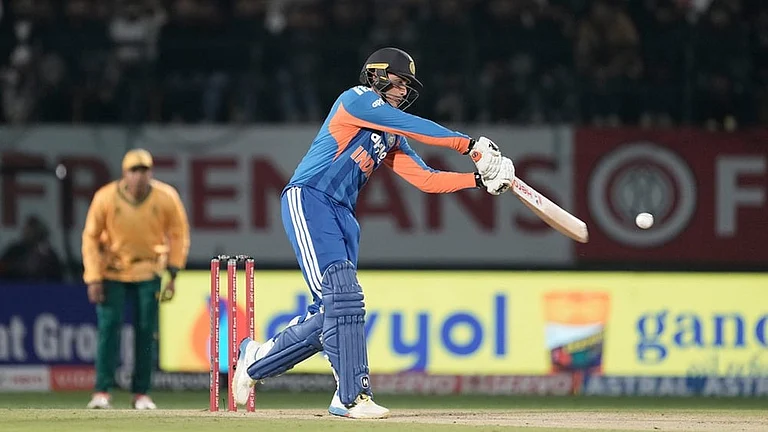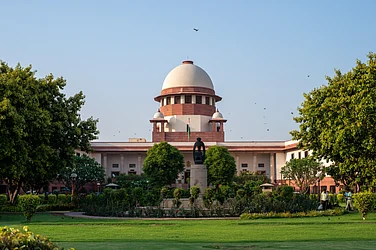Legal activist Vrinda Grover said in the FeministsIndia e-list about the Ordinance: “The impunity of every citadel is intact—family, marriage, public servants, army, police.” In effect, she said, the Ordinance is simply the pending Criminal Law Amendment Bill 2012, widely criticized by women’s organizations, which has been sneaked in as law without debate or consultation, in Parliament or outside. Feminists activists are rightly suspicious of the sudden sense of “emergency” that has gripped the government, when it has ignored our demands for criminal law reform on sexual violence for over twenty years.
Here I will document two press releases issued by women’s groups, and draw attention to some troubling and unresolved debates within the women’s movement in India today. The post will conclude with a useful table comparing the Ordinance and the JVC Report, issued by the Ministry of Home Affairs.
As has been widely reported now, hundreds of individual women’s movement activists and organizations from all over the country have called upon the President not to sign into law this Ordinance that makes a mockery of the recommendations of the Justice Verma Commission Report that was received with a sense of relief and acclaim by feminists in India. Despite these appeals, the President signed the Ordinance today.
The press release making this request to the President said:
Information in the public domain, through media sources, reveals that an Ordinance on amendments to sexual assault law was cleared by the Cabinet yesterday, on February 1, 2013 – about 20 days before the next parliamentary session. We are alarmed at the complete lack of transparency displayed by the Government in proposing an Ordinance as an emergency measure. We wonder what objective and purpose will be served by such a hasty non-transparent measure – less than 3 weeks before the parliamentary session, since the proposed law will not retrospectively apply to the Delhi gang rape case.
We demand transparency and due process in law making. We demand that the Parliamentary process, including the Standing Committee process be upheld, for this is the place where we, as citizens of this country, have the right to be heard.
The statement pointed out that virtually all the recommendations of the JVC Report that had been hailed as “signs of a paradigm shift” in understanding violence against women, had been dropped, that is:
recognition in law of marital rape, new provisions on the offence of breach of command responsibility, non-requirement of sanction for prosecuting a member of the security forces accused of sexual assault and rape, provision for trying them under ordinary criminal law for sexual crimes; and change in definition of consent to any sexual act. ..
Furthermore, the content of the Ordinance to our knowledge has introduced provisions that were strongly rejected by the Justice Verma Committee, including the death penalty.
It is revealing that the sanction for prosecuting members of security forces involved in sexual assault has been retained. Rape is not only about individual or private acts of misogynist violence, feminists have long been concerned with sexual violence as a weapon of war, and as part of a wider repertoire of race, communal and caste violence. In India, custodial sexual violence against women (by police and army) and the culpability and impunity of the state, has been addressed in significant ways.
Large parts of the country are under effective army rule, the North-Eastern states and Kashmir in particular, being covered by the Armed Forces Special Powers Act. From time to time acts of sexual violence on women (activists as well as relatives of men suspected to be militants) are carried out by members of the Indian state’s armed forces.
Many such instances come to the notice of democratic rights groups and feminists, and are investigated by them, and protested about in various ways. Many remain unknown. But for the women’s movement in India, the recognition of rape as a political weapon is a significant part of its politics.
But what is the Indian state saying when it rejects the idea through this Ordinance that such cases should be tried under the criminal law of the land? Is the Indian state making it quite explicit that rape is a weapon of war, and that its coercive apparatus will continue to use it with no compunction?
Two issues stand out in the conversation within the women’s movement – gender neutrality in rape law and marital rape. The statement is strongly critical of the provision of gender neutrality regarding the perpetrator of sexual assault, suggesting that both women and men could potentially be charged for the offence. The statement insists that “Rape as we know it is a crime largely defined as male violence against women, with absolutely no evidence of women as perpetrators. This is in disregard of the Justice Verma recommendations too, and is totally unacceptable.”
The question of gender neutrality in law on sexual violence is the subject of sharp debate within feminist and queer groups in India. One important suggestion for rape law reform is to remove narrowly defined ‘rape’ (which is defined only as penile penetration of the vagina) and replace this with a series of degrees of ‘sexual assault’, the punishment increasing in severity with the degree of physical harm caused. As Flavia Agnes has pointed out, only in sexual assault is harm caused by a part of the human body considered to be more grievous than harm caused by a weapon. The reason why in patriarchal law, penile penetration of the vagina is considered more grievous than penetration by say, an iron rod, is obvious. Rape is considered to be a harm against the honour of the woman’s family, and the purity of her womb. Only the penis can damage that purity in such a way that patrilineal succession is cast in doubt – all other damage is bearable, ideally, leading to the death of the raped woman. That would be most ideal from the point of view of the family.
But once the definition of rape is expanded, gender neutrality of the perpetrator will have to be taken into account.
As Rohini Hensman said in the FeministsIndia e-list while discussing the issue of gender neutrality:
My mind goes to little 10-year-old Sonu who was sexually tortured and killed by the women who employed her. So according to our definition, women can quite easily rape a child or another woman, although Sonu’s case would be covered by the new Child Sexual Abuse Act. In rare circumstances, like Abu Ghraib, women can even sexually assault men. In situations of mass violence like Gujarat, women can be part of the mob engaged in ‘criminal solicitation’ (the charge against those who cheered on the rapists in the film The Accused, which was based on a real-life gang-rape).
With the possible repeal of Section 377 on the cards, there is consensus among feminists on gender neutrality with regard to the victim, so that rapes of men, boys and hijras can be taken into account. Where the perpetrator is concerned, it is more complicated. The perpetrator is assumed to be generally male, but in cases of custodial rape or rape in the context of a clear power situation, gender neutrality is also being proposed by some feminists for the perpetrator. The JVC Report has considered separate types of sexual abuse/violence separately, such that in some kinds of sexual abuse the perpetrator can be gender neutral and in others, not.
This suggestion of gender neutrality for the perpetrator of sexual violence is very contentious within the feminist perspective, as the statement above reveals. The fear is that gender neutrality with regard to the perpetrator except in clearly defined situations such as custody/authority, and with regard to child abuse, will only further make women the target of the law rather than offering them protection, given our overwhelmingly patriarchal and sexist context.
The other question has to do with recognizing marital rape. Again, Rohini raised a question that has long troubled me – if a marriage is violent, that must be grounds for divorce, but what are we saying when we insist it be treated as a crime? Is it preferable for a woman to have a husband in prison than be divorced? Does the idea of marital rape as a crime in fact protect the institution of marriage?
Rohini put it this way:
It is one thing to say that marital rape should be regarded as an act of domestic violence and should be grounds for divorce – that should be relatively non-controversial. But given that marriage is a sexual relationship, should all cases of marital rape be punished with 7 years or more in jail? Consider the following scenario: A young woman and man are married off, and the same night she comes crying and complaining that her husband raped her. Should he be jailed for what is, from his point of view, merely consummating their marriage? Unless we are demanding very clearly that the state ensure that all marriages are consensual (are we? in which case, how?), then we can hardly demand that he should be jailed for years – that is simply inconsistent and unfair too. So we need to make it much clearer what we mean by ‘recognition of marital rape’ before we can argue for it convincingly.
Rohini’s comments point to the inherent violence of compulsory marriage that grounds our society. In other words, criminalizing criminal rape rather than treating it as grounds for divorce may still leave “the impunity of the citadel” of marriage intact.
In a related press release, sex workers’ organizations across the country (National Network of Sex Workers – India) too urged the President not to sign the Ordinance, raising a very crucial set of issues that have to do with criminalizing sex work. The statement strongly pointed out that ‘Trafficking of Persons’ was outside the purview of the specific terms of reference provided to the Justice Verma Commission in December 2012 and any recommendations relating to trafficking should not be included in the Ordinance:
The proposed Section 370 incorporated in the Ordinance cleared by the cabinet, conflates trafficking of persons and those who consent to sex work. At the heart of the problem is the newly worded Section 370 of the Verma Commission, which has been accepted in totality by the Ordinance. The Section deals with the offence of Trafficking of a Person. The term “exploitation” includes “prostitution” itself. This in essence means that all “prostitution” will now be interpreted as exploitation.
The Ordinance if accepted would criminalize people in sex work since the section does not differentiate between “coercive prostitution” and prostitution; nor does it talk about the “exploitation of prostitution“.
The Verma Commission has wrongly interpreted the internationally recognized and existing explanation of exploitation (under the UN Protocol, 2000), which states “Exploitation shall include, at a minimum, the exploitation of the prostitution of others or other forms of sexual exploitation”. If the section is accepted, it would go against the commitment made by India which is a signatory to the Protocol and has ratified the UN Protocol in 2011.
The inclusion of voluntary and consenting sex workers into the definition of exploitation puts back the struggle waged by sex worker communities across India to ensure dignity for people engaged in sex work.
We are deeply concerned that this interpretation if accepted by the President of India will contradict the Hon’ble Supreme Court of India which has upheld the rights of women in sex work observing that Article 21 grants them a right to live with dignity.
If the section is accepted, it would go against the commitment made by India which is a signatory and has ratified the UN Protocol in 2011.
Feminism has for long seen prostitution as violence against women, and many feminists still do. However, a new understanding of the practice has emerged with the gradual politicization of people who engage in prostitution, and their voice becoming increasingly public. One of the key transformations that has come about because of this, is the emergence of the term sex work to replace ‘prostitution’.
The understanding behind this is that we need to demystify ‘sex’ – it is only the mystification of sex by both patriarchal discourses and feminists that makes sex work appear to be ‘a fate worse than death’. In fact, the preliminary findings of the first pan-India survey of sex-workers found that about 71 percent of them said they had entered the profession willingly. Hence the insistence of sex workers organizations on distinguishing between voluntary and coercive prostitution
And to to conclude, a useful document – a release from the Ministry of Home Affairs that tabulates the recommendations of the JVC Report that were accepted in part/in full/ or rejected.
JUSTICE VERMA COMMITTEE RECOMMENDATIONS |
ACCEPTED IN TOTO
ACCEPTED IN PART
NOT ACCEPTED
INDIAN PENAL CODE (1860)
CRIMINAL PROCEDURE CODE 1973
THE INDIAN EVIDENCE ACT, 1872
ARMED FORCES (SPECIAL POWERS) ACT, 1958
This was first published at Kafila


























